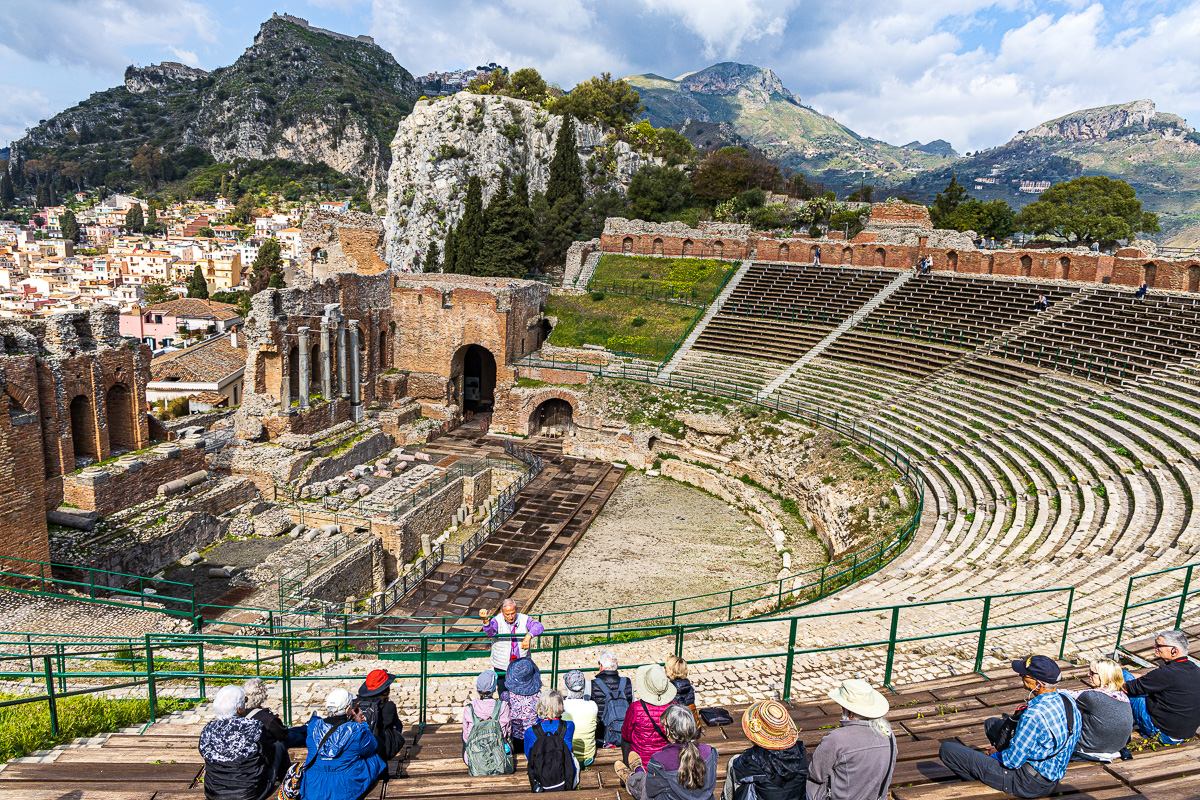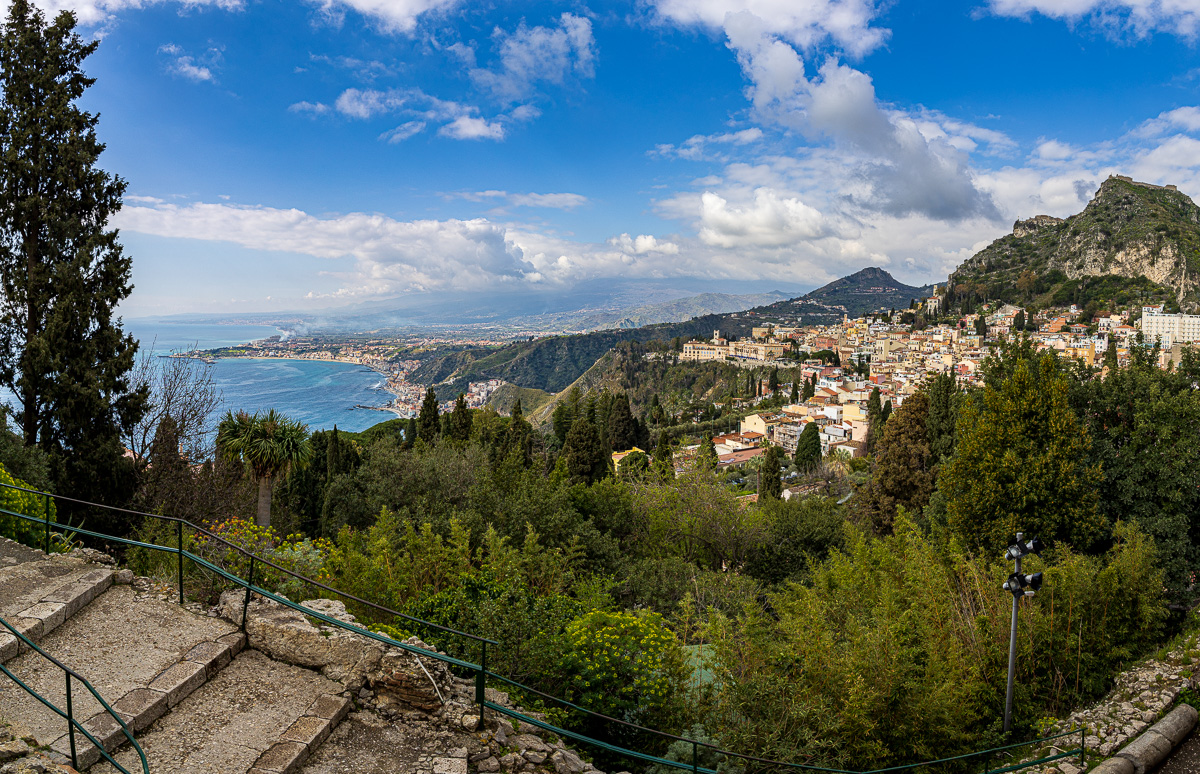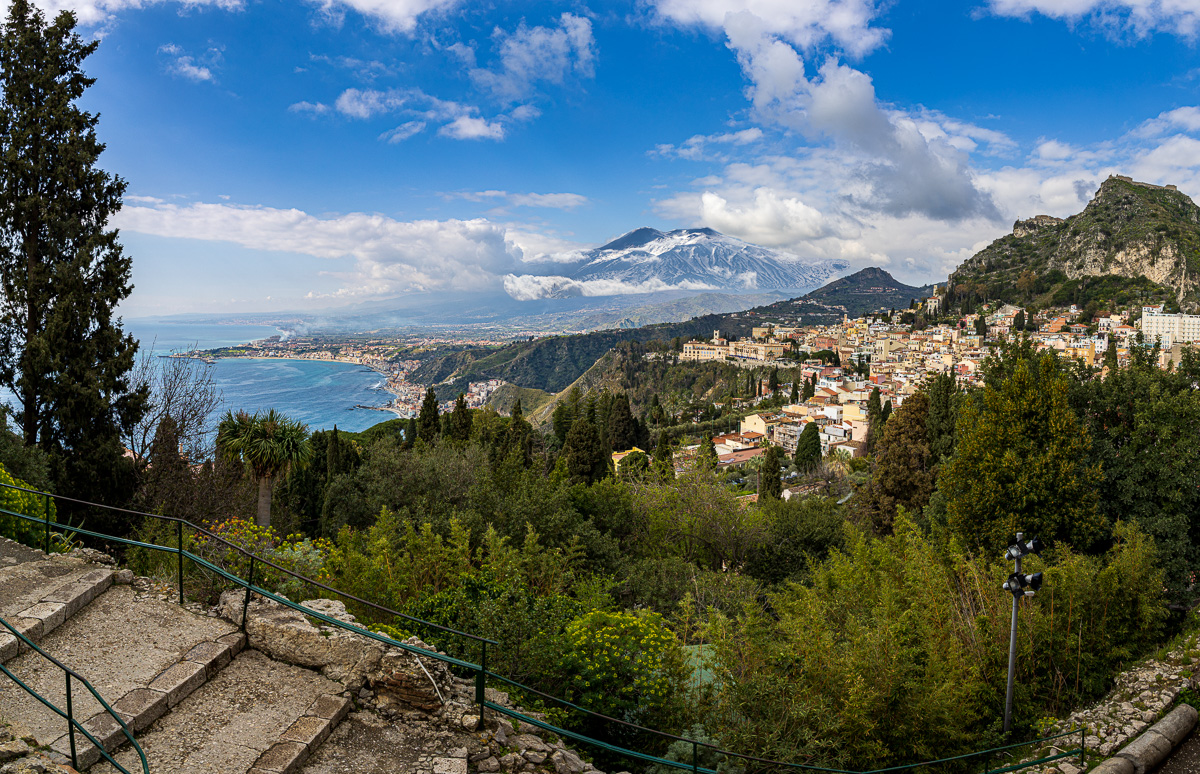We’re heading to the theater today, a Greek one. Before that, however, we had to try our first Sicilian breakfast. I read that Sicilians, like other Italians, prefer to have a sweet rather than a savory breakfast. Our breakfasts were served buffet style in the restaurants of the hotels where we were staying, so I’m not sure that I can claim these breakfasts were typically Italian. There were scrambled eggs along with meats and cheeses, but I can attest to the fact that sweets were present in abundance. There was also plenty of espresso, cappuccino and juice to wash it down. You could squeeze your own orange juice if you wanted it fresh, or you could try blood orange juice (second-to-last picture). Blood oranges flourish in the Mediterranean climate.
Mouse over the small photos in galleries to see captions.
Click on any one to enlarge, then use arrows to scroll through the rest of the images.
After consuming a larger breakfast than we would normally have had at home, we went on a tour of Taormina’s “Teatro Antico” (Ancient Theater) with the rest of the Road Scholar group. This theater was constructed by the Greeks in the 3rd century BCE. “Constructed” is probably not the best term since it was actually carved out of the rock on the side of Mount Taro. It’s estimated that the Greeks removed about 100,000 cubic meters of rock to form the 350 ft semi-circular venue. The theater was created to accommodate dramatic or musical performances so it had a place for an orchestra at the lower level and a stage at a higher level where actors or dancers would perform.

In the 3rd Century CE, the Romans remodeled the theater to transform it into an amphitheater. They added large columns to encircle the stage and converted the orchestra area into an arena for gladiator fights and wild animals. The theater is still used today for performances both theatrical and musical. As you can easily see in the photo above, many of the original rock “bleachers” have been covered with more comfortable wooden seats.
The theater is situated on a hillside that offers a wonderful view of Taormina with Mt. Etna in the distance. Unfortunately, we were only able to see clouds in the distance. However, with the miracle of modern AI* I’m able to show you what it would have looked like! Watch carefully.
Taormina has been a tourist destination of choice since the 18th century. It was part of The Grand Tour. Visitors, including Oscar Wilde, Richard Wagner and others, were attracted by the town’s pretty streets, mild climate, baroque architecture and spectacular views. Johann Wolfgang Goethe wrote in his famous Italian Journey: “Never has the audience of a theatre seen a similar spectacle.” With that in mind, let’s take another short walk around the town.
Walking down Corso Umberto, as seen in the gallery below, I was still fascinated by the narrow side-streets and the beautiful balconies. A Star of David is a reminder that there was a time when Christians, Arabs and Jews all lived together in Sicily. Sadly, the Spanish Inquisition put an end to that. Motorcycles and scooters are popular in a country with narrow streets and high gas prices. This one is not a Harley but a Beverly, a name I’d never heard before. Though I didn’t have time to go in, we passed the “Museo della pasta,” where you can find “Ristorante – Cooking class.”
The Piazza IX Aprile is Taormina’s most beautiful square, where our view of the Ionian Sea on a sunny day was very peaceful. The square was named after the 9th of April, 1860, when mass at a nearby Taormina church was interrupted to announce that Garibaldi had arrived to begin his conquest to make Sicily a part of Italy. It turns out that he didn’t arrive until the 9th of May but the locals kept the name anyway. The Piazza is also home to Sant’Agostino, a deconsecrated church that now serves as a library, and the Church of San Giuseppe. The fountain by the Duomo, often crowded, is a relaxing place for this young couple, but they appear to be looking at an iPhone. Finally, here’s the symbol of Sicily, known as Trinacria. This term comes from the Greek word for three-pointed or three-legged and refers to the triangular shape of the island. It’s used on the Sicilian flag.
Many famous people took an 18th century Grand Tour of Taormina. We just took our 21st century Road Scholar Tour of Taormina.
* AI = Anderson Inventiveness
<— Introduction to Sicily (Sicily Part 1) :: (Sicily Part 3) Volcanoes and Wine –>

